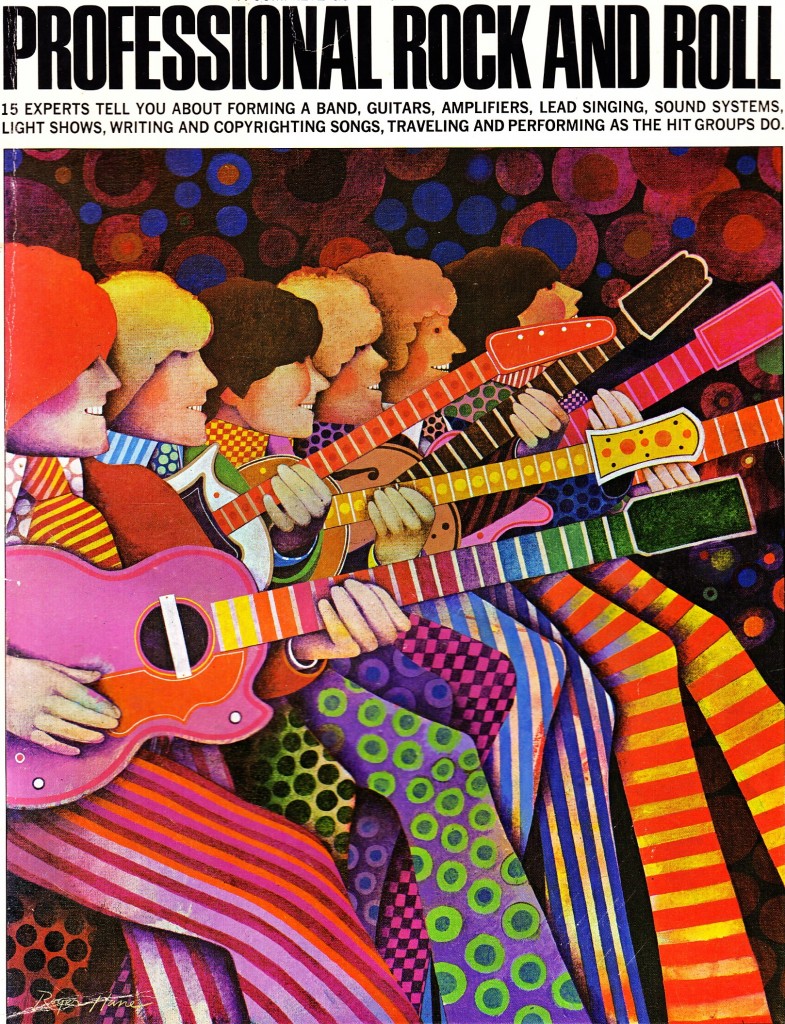 Download a six-page excerpt regarding ‘the sound system’ from “Professional Rock And Roll” (Ed. Herbert Wise, Collier, 1967):
Download a six-page excerpt regarding ‘the sound system’ from “Professional Rock And Roll” (Ed. Herbert Wise, Collier, 1967):
DOWNLOAD: Professional_Rock_And_Roll_Excerpt
Very much along the lines of “Electric Rock” (1971) and “Starting Your Own Band” (1980), “Professional Rock And Roll” (h.f. “PRR”) is especially interesting in that it was published a mere three years after The Beatles appeared on Ed Sullivan, an event which is widely considered to have marked the beginning of The Sixties Rock Era. In such a short span of time, enough of an industry and codified set of working-practices seems to have formed around young teen-oriented electric-guitar-based groups to have resulted in the large paperback that I now hold in my hand.
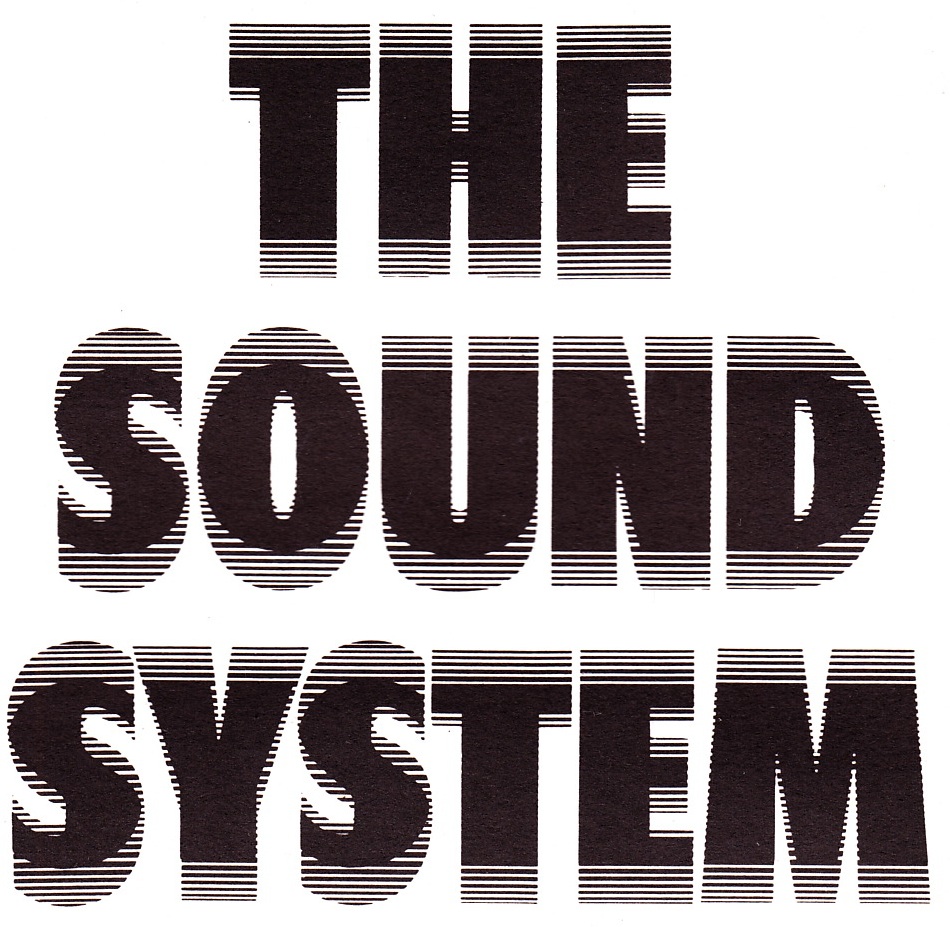
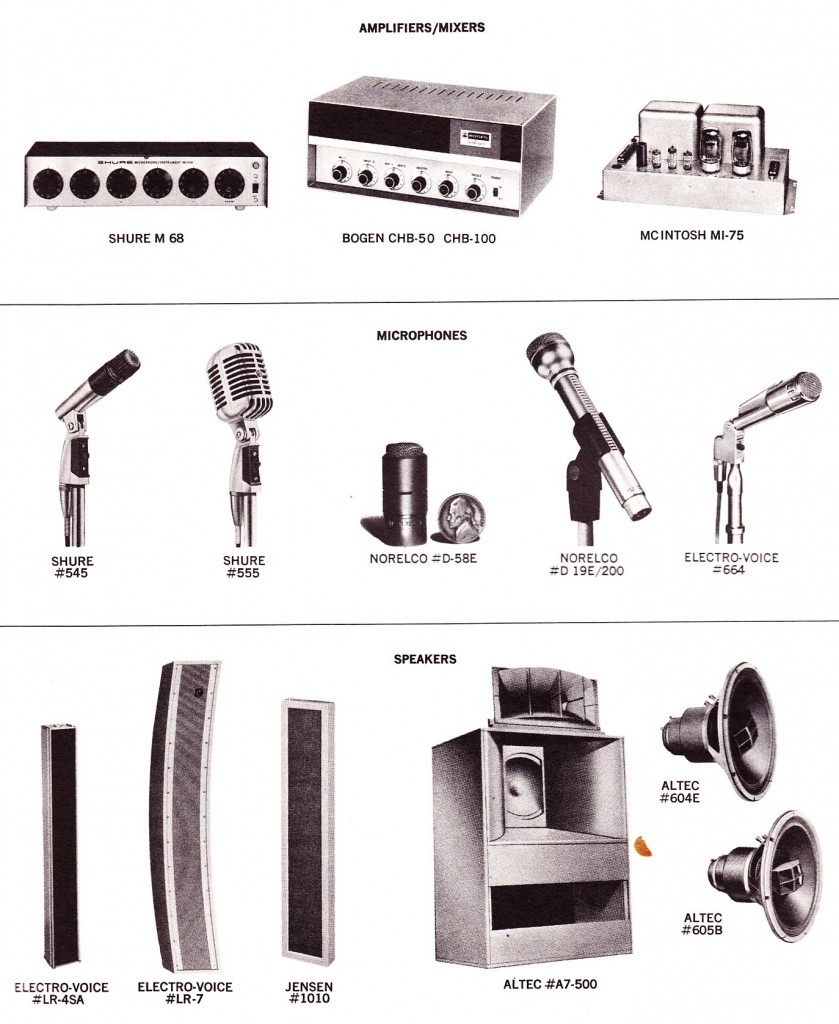 “PRR” parses the idea of what it takes to be a ‘professional rock and roll band’ in some interesting ways. There is the chapter on PA equipment, with the various above-illustrated items discussed (BTW, I still regularly find most of these items at the estates+fleas, so points to the author for accuracy), as well as a chapter each on Electric Guitars and Keyboards.
“PRR” parses the idea of what it takes to be a ‘professional rock and roll band’ in some interesting ways. There is the chapter on PA equipment, with the various above-illustrated items discussed (BTW, I still regularly find most of these items at the estates+fleas, so points to the author for accuracy), as well as a chapter each on Electric Guitars and Keyboards.
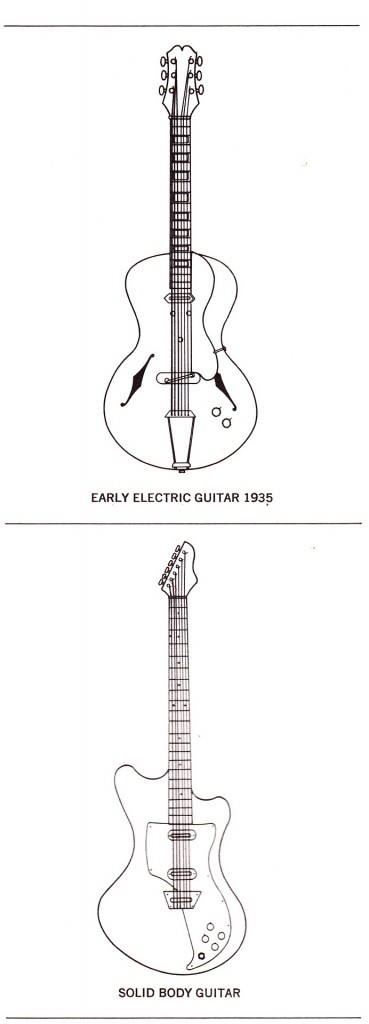
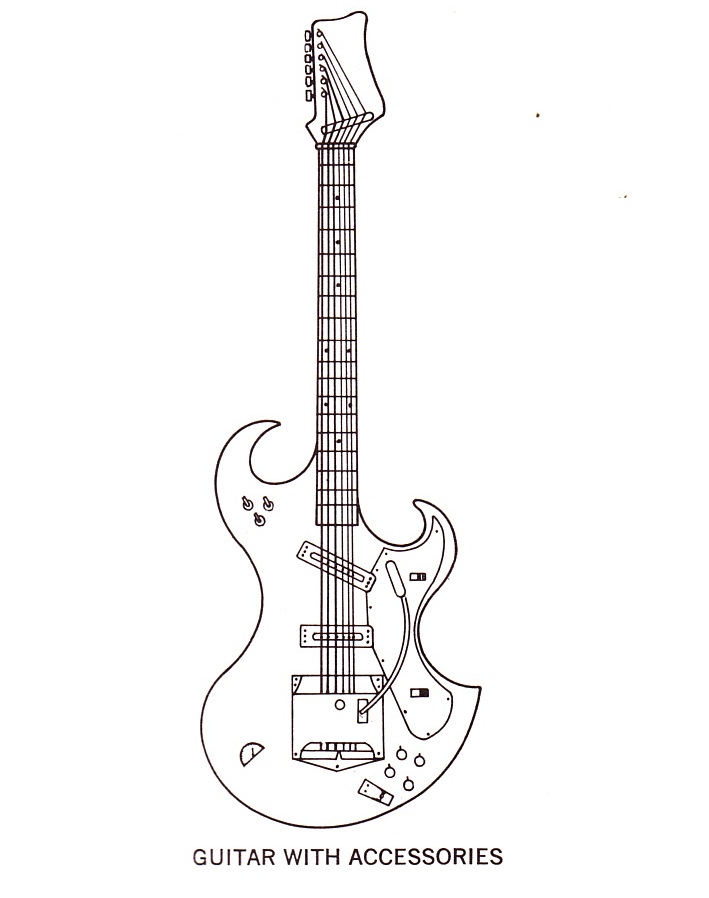 Above: the three types of Electric guitar: ‘Early,’ ‘Solid Body,’ and ‘With Accessories.’
Above: the three types of Electric guitar: ‘Early,’ ‘Solid Body,’ and ‘With Accessories.’
We also get chapters on putting a band together, chords, songwriting, lead-singing, hitting-the-road, and managers/agents/publishers. Somewhat more surprising is the in-depth chapter on how to locate and buy stage-clothing and the chapter on light-shows.
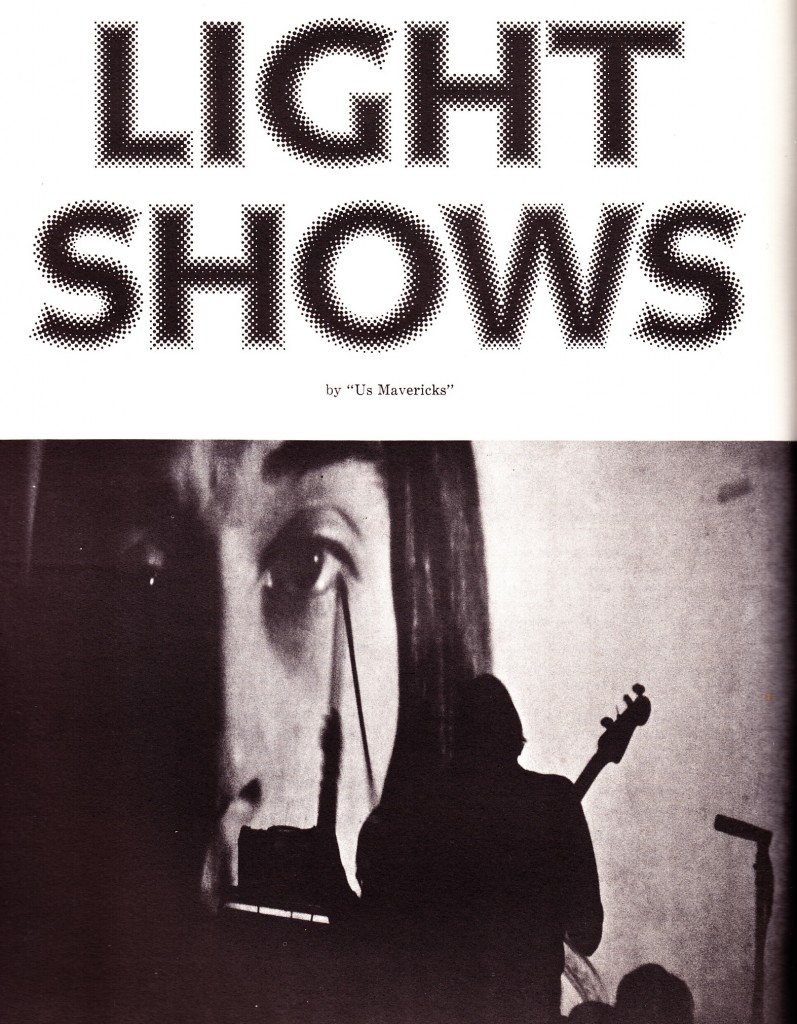 I think it’s somewhat interesting to learn how important the idea of visual-accompaniment-to-music was in those early years of the Rock industry. We’ve been told so often how MTV changed the visual/sonic balance of musical-signification so drastically, to such varied effect as manufacturers’ increasing the size of their logos on equipment (E.G., Zildjian Cymbals) and even the barring of rock-stardom to homely female performers (I.E., the Janis-Joplin-wouldn’t-have-made-it-today assertion). I can’t really say that this changes the argument, but it’s worth consideration.
I think it’s somewhat interesting to learn how important the idea of visual-accompaniment-to-music was in those early years of the Rock industry. We’ve been told so often how MTV changed the visual/sonic balance of musical-signification so drastically, to such varied effect as manufacturers’ increasing the size of their logos on equipment (E.G., Zildjian Cymbals) and even the barring of rock-stardom to homely female performers (I.E., the Janis-Joplin-wouldn’t-have-made-it-today assertion). I can’t really say that this changes the argument, but it’s worth consideration.
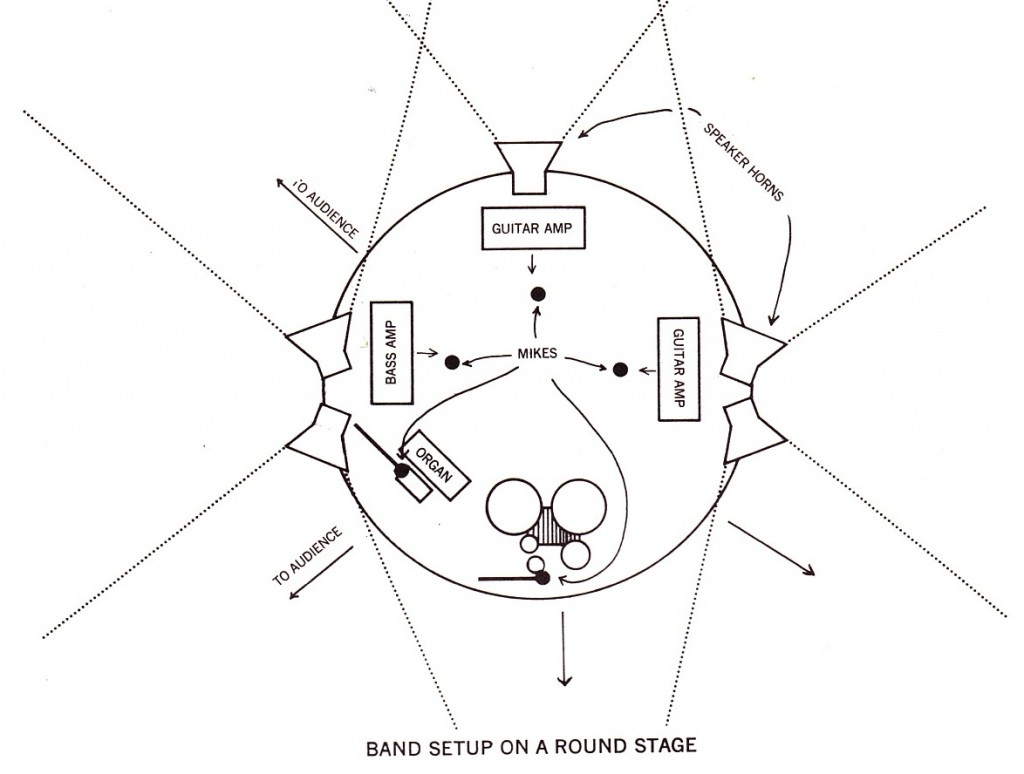 “PRR” also has a number of charming anachronisms, such as the diagram above. The authors felt it necessary to explain how a group should properly stage their gear on BOTH of the common types of stages: the theatre-type stage (band faces the audience) and, of course, the round stage. Wow. Were rock-shows on round-stages really that common in 1967? I’ve performed probably a thousand shows since the early 1990s, in venues as small as basements and as big as 10,000+ festivals, and never once on a round stage with the audience on all sides. Crazy.
“PRR” also has a number of charming anachronisms, such as the diagram above. The authors felt it necessary to explain how a group should properly stage their gear on BOTH of the common types of stages: the theatre-type stage (band faces the audience) and, of course, the round stage. Wow. Were rock-shows on round-stages really that common in 1967? I’ve performed probably a thousand shows since the early 1990s, in venues as small as basements and as big as 10,000+ festivals, and never once on a round stage with the audience on all sides. Crazy.
Perhaps the most interesting thing about “PRR” is the subject that it totally omits: there is nothing offered on the subject of recording. Not demo recording, not studio recording. No mention. Also lacking is a chapter on promotion and publicity. To most musical groups today, these seem to be the central issues that occupy most of their energy: thanks to all of the incredible, affordable audio-recording equipment and software we have now, recording and composing music have effectively become the same task; they are inseperble activities. Likewise, the public promotion, marketing, and branding of a musical project can now begin as soon as the first track is mixed down.
*Is there a similar book to “PRR” published for the modern musical era?
*If a high-school age band were today to study and implement the ideas in “PRR,” could they generate a 1968-type garage-rock group?
*Did anyone reading this purchase “PRR” as a young musician? Did you find it helpful?
Next up in this series: “Making Four Track Music,” John Peel, 1987.
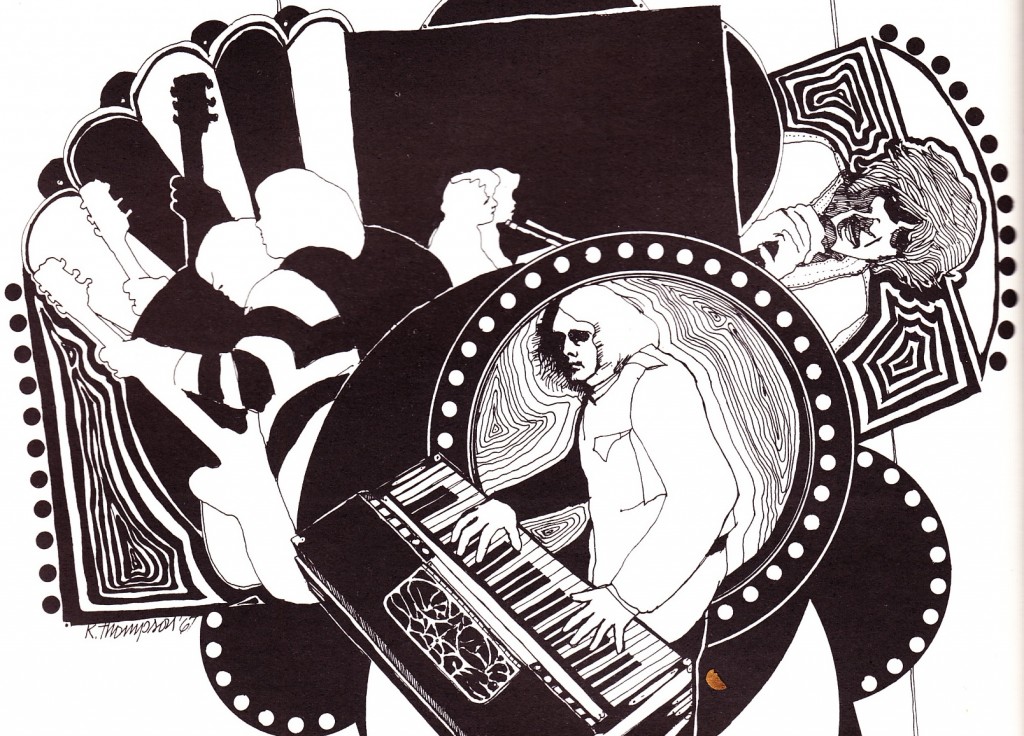
4 replies on “Out-of-print Book Report: “Professional Rock And Roll” (1967)”
Loving this post, and what great illustrations, are there any more in the actual book that you could post? Also any idea on who the illustrator was? Looks like the signature could read Roger Hane.
Hey man. Given that Milton Glaser wrote the into to this ‘roger hane’ monograph (http://www.bookpalace.com/acatalog/Home_Roger_Hane_710.html), yeah i think it’s safe to assume that the cover illustration is indeed by a ‘roger hane.’….. THAT roger hane in fact. Glaser BTW is most famous in the music world for this classic: (http://1.bp.blogspot.com/-dghH9s1AdEg/Tcuv3E7pXxI/AAAAAAAAAb8/0STTOfCgNPk/s1600/MiltonGlaserDylan1966.jpg).
i can’t really scan anymore, sorry, time is short on this earth… but i am sure u can find a cheap copy online. good luck!
c.
I got a kick out of seeing the Mcintosh MI75 in that line up of amps. Yes, you used to be able to buy the “Mcintosh Industrial” amps like the MI75, MI200 and MI350 at a discount thru pro sound sources whereas the home McIntosh units were never, never discounted, not even just a tiny bit. The lack of swank chrome plating may have deterred some buyers.
These sort of books fascinate me a lot and I have a lot of titles on a lot of subjects. They are arcane and no one even thinks of them. One of my favorites is “The Axelrod Axe” about playing 12 string guitars with the strings in different tunings-within a single course. I have books on building steel guitars, repairing Russian cameras, even one on how to build an X ray machine with damper diodes and an ignition coil off a Model T Ford. Oh, and one by a guy named Santuci that has pictures of someone (and, a lot of her) the above commenter knows pretty well if he’s who I suspect he is. Play any good Burns Scorpions lately, C.?
Yep, Roger Hane also did covers for Carlos Castaneda’s books as well as the gatefold to Cream’s Goodbye album, nice!